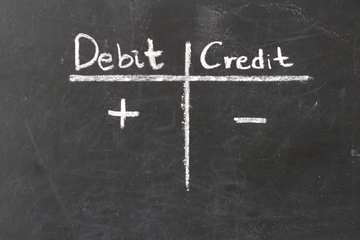You know the letters and expect to see them when comparing personal loans, credit cards, secured loans, and lines of credit. When considering borrowing money, APR is one measure that allows you to compare the cost of different products.
What Is APR?
APR is a measure of the cost of your loan or line of credit, including the interest rate and fees represented as a percentage. An example of a fee that is included in the APR is a loan origination fee. Because it includes fees in addition to the interest rate, APR is a more comprehensive measure of the cost of borrowing than the interest rate alone.
How Does APR Work?
Borrowed money usually requires ongoing payments unless there is a specific promotion. If you take out a personal loan, secured loan, credit card, or bank line of credit, plan on paying the borrowed money back to the lender every month.
Why Is the Annual Percentage Rate Important?
When shopping for new credit, borrowers should compare loans to determine which best fits their needs. As the most robust measurement of your total cost of credit, APR is one way to determine which credit products will result in the lowest cost of borrowing.
Fixed Rate or Variable Rate APR: Which Is Better?
Fixed-rate and variable-rate APRs each come with their tradeoffs. Those trade-offs are risk and the cost of borrowing.
Rate risk means there is a risk that an interest rate might increase. A fixed-rate APR has no rate risk and is predictable. The stated APR stays the same throughout the loan term, and you always know what you'll pay. A drawback of a fixed rate is the potential to pay more for your loan or line of credit when interest rates are very low.
A variable-rate APR includes risk, as it could cost you much more than a fixed-rate APR if interest rates go up. In times of low rates, a variable-rate APR will adjust downward as interest rates fall. But just as that APR can fall, it can adjust upward as interest rates increase.
So which is better? There is no one correct option. Your rate type will always come down to individual needs and the borrowing situation in which you find yourself.
APR vs. APY
They seem similar, and consumers can easily confuse APR and APY, but they are polar opposites.
APY stands for annual percentage yield and is what you'll earn on your saved money. Whether you use a simple savings account, money market account, or certificate of deposit (CD), expect to be able to compare them with APY as a deciding factor.
APR vs. Interest Rate
Another common term is "interest rate," but interest rate and APR are not interchangeable terms. APR is a more comprehensive aspect of expressing the actual cost of borrowing. Your interest rate is the percentage that will be charged on your loan's outstanding principal. much broader measure, including the interest rate and other related costs the borrower will pay as a result of the loan. Sometimes, the APR and interest rate are the same if no additional fees or charges are applicable to your loan. The more comprehensive nature of APR makes it a better decision-making tool than the interest rate when shopping for credit.
Borrowing is a common component of modern life. Most of us carry a credit card or have taken out a loan to make a large purchase, and APR is the standard measure to compare which competing credit offerings we use. Comparing APRs will help you find the best credit product when evaluating loans or lines of credit.
Are you shopping for a loan? Apply through Integra Credit today..



